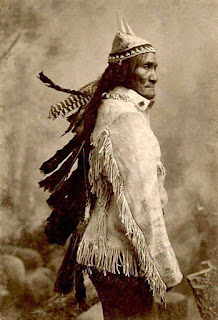What language do the Apache Indians speak?
Almost all Apache people speak English today, but many Apaches also speak their native Apache language, which is closely related to Navajo. Apache is a complex language with tones and many different vowel sounds. Most English speakers find it very difficult to pronounce. If you'd like to know a few easy Apache words, "ash" (rhymes with 'gosh') means "friend" in Western Apache, and "ahéhe'e" (pronounced similar to ah-heh-heh-eh) means "thank you."
Almost all Apache people speak English today, but many Apaches also speak their native Apache language, which is closely related to Navajo. Apache is a complex language with tones and many different vowel sounds. Most English speakers find it very difficult to pronounce. If you'd like to know a few easy Apache words, "ash" (rhymes with 'gosh') means "friend" in Western Apache, and "ahéhe'e" (pronounced similar to ah-heh-heh-eh) means "thank you."
Tweets from https://twitter.com/UnifiKshuNaShun/lists/tweets-for-blogs



